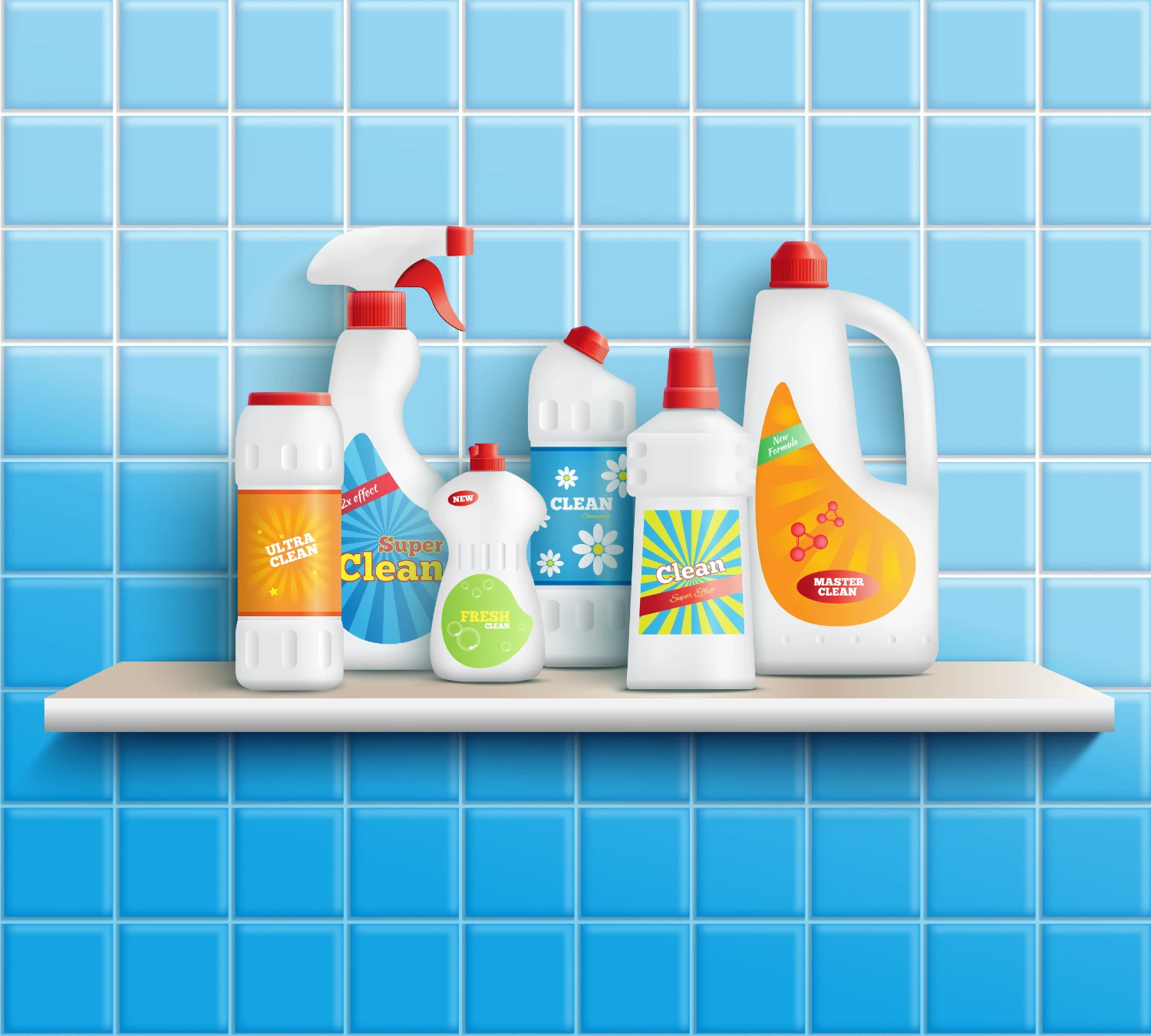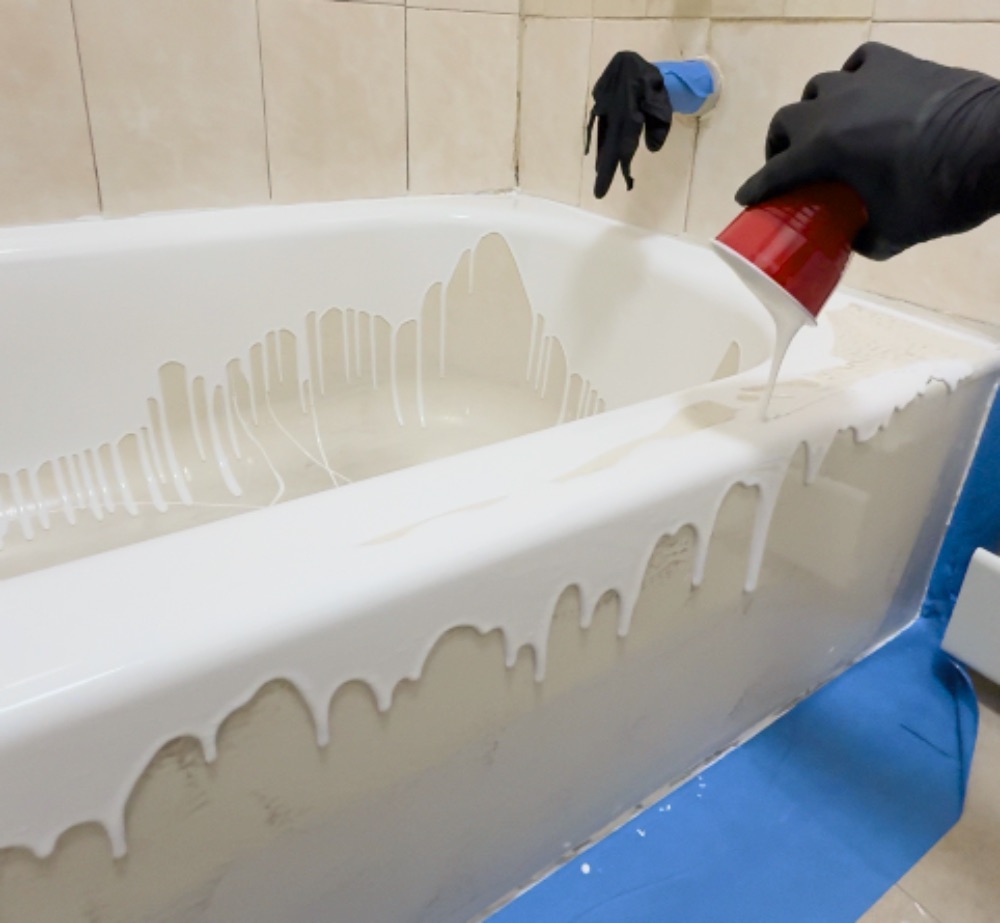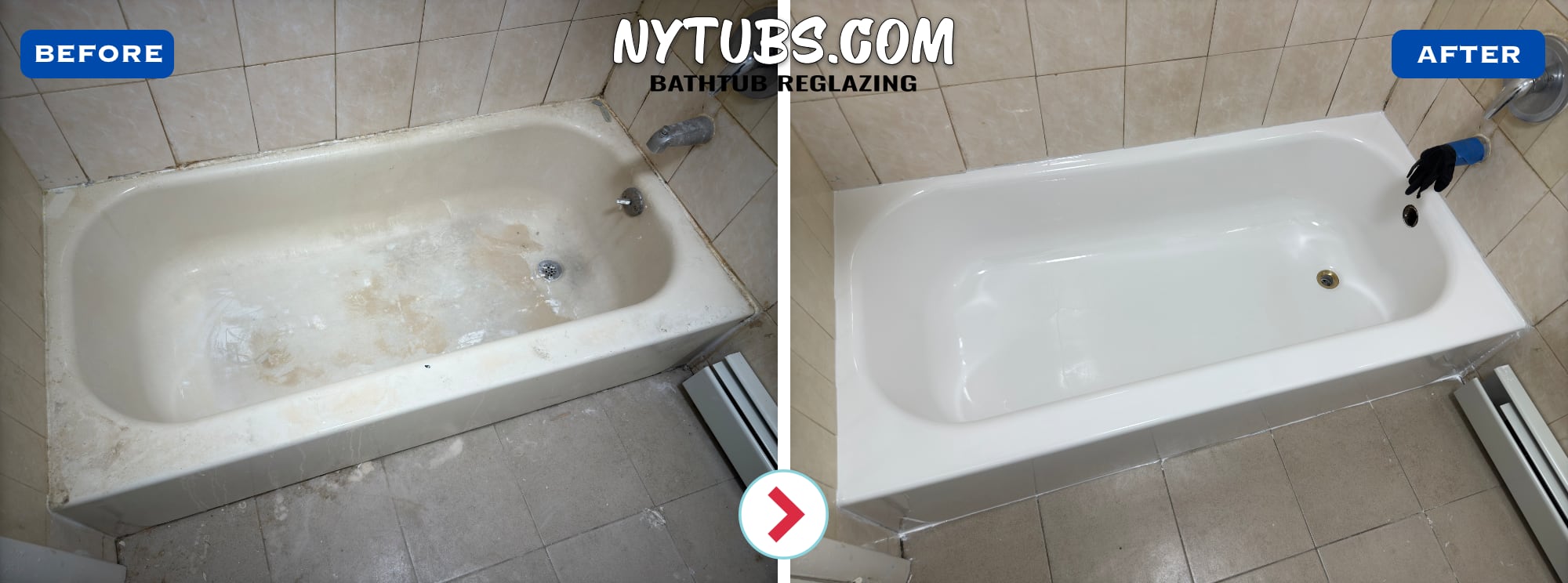How Do I Get My Bathtub White Again?
A new, white tub is inviting and relaxing at the same time. It gives your bathroom an elegant, luxurious appearance. But keeping it clean and spotless can be a challenge.
Hard water, rust, soap scum and mildew are just a few of the common causes of bathtub stains. Not only are the stains unsightly, but in the case of mold or mildew they can present a health hazard.
What’s the best way to clean stains, or even better, to prevent them in the first place?
There are a large array of commercial cleaners available, both all-purpose cleaners and specialty cleaners. Deciding which to try on your bathtub can be overwhelming when faced with so many different choices, all of which claim to be the best.
As you’re considering your options, keep these tips in mind:
-
Check for health cautions or warnings. If the cleaner contains harmful chemicals, use all the precautions recommended by the manufacturer.
-
Follow directions carefully. If the cleaner needs to set on the surface for a certain amount of time before being wiped off, be sure to allow enough time for it to work.
-
Choose products that are appropriate for the surfaces in your bathroom (tile, porcelain, stainless steel, etc.) and for the cleaning purpose (disinfecting, deodorizing, removing stains).
-
Compare price and value. Lower prices do not necessarily mean better value if they’re not effective or if they’re so diluted that you have to use more product.
-
Search for reviews. Try to find unbiased reviews from actual customers, not just from the manufacturer’s website. Articles, videos and forums often have detailed information about what users love – and don’t love – about the product.
-
Keep in mind that simple is often better. Having an effective all-purpose cleaner can be more efficient than having dozens of cleaners for one specific purpose that you never use.

DIY NATURAL CLEANERS
If you’d like to save money, save the planet, and avoid harsh chemicals, you can use common household ingredients to make your own cleaners. Try these do-it-yourself recipes; they may be just as effective as name-brand cleaners but at a fraction of the price.
-
General bathtub cleaning
Vinegar is an effective cleaner that can be used regularly on most bathtubs. To get the best results, follow these steps:
1. Mix equal parts vinegar and warm water in a spray bottle
2. Spray the solution on the surface of the tub and let it set for 15 minutes. That will give it time to break down the dirt or soap scum that has built up
3. Use a cloth or sponge to scrub the tub. You may have to put some extra effort into any remaining stains, but most of the grime and dirt will be loosened by the vinegar and will be easy to wipe off
4. Rinse the tub with warm water
5. Repeat if necessary. It may take more than one application of the vinegar to bring it back to a sparkling white finish
-
Removing minor spots
For minor spots and stains, baking soda is a mild abrasive that can be effective in removing them:
1. Sprinkle baking soda on the surface of the tub and spray it with the vinegar and water solution. The baking soda will foam up and help break down the stains and spots
2. Wait a few minutes for it to form a paste on the surface. That will give it time to work on the stains.
3. Scrub the paste with a cloth or sponge to remove the stains
4. Rinse the tub with warm water. Be sure to rinse well to remove all the baking soda, then dry with a clean towel
-
Removing stubborn stains
For tough stains that don’t come out with the above solutions, hydrogen peroxide can clean most bathtub stains, such as rust, hard water spots and soap scum:
1. Mix one part hydrogen peroxide with two parts baking soda (or cream of tartar) to form a paste
2. Rub the paste into the stain and let it set for 30-60 minutes
3. Wipe off the mixture with a cloth or sponge, scrubbing the stain if needed
4. Rinse well with warm water to remove all traces of the baking soda, then dry with a clean towel
-
Eliminating hard water spots
Mineral deposits make your tub look cloudy and dirty, but they are fairly easy to get rid of with vinegar:
1. Soak a paper towel in white vinegar. The vinegar is effective in removing mineral deposits from hard water
2. Place the paper towel directly on the spot and leave it for an hour or two. This allows the vinegar to penetrate the mineral deposits
3. Remove the paper towel and wipe the surface to remove any residue, then rinse well
-
Getting rid of rust stains
Borax is a natural cleaner that you can usually find in the laundry section of grocery stores and discount stores. It can be used along with lemon juice to effectively remove rust stains:
1. Sprinkle borax on the rust stains
2. Rub the stains with the cut half of a lemon to form a paste. The lemon is naturally acidic, which breaks down the iron oxide (rust), and the borax is a mild abrasive that helps lift and remove the loosened rust particles from the surface
3. Leave the paste on for 15-30 minutes, depending on the severity of the stains
4. Wipe with a cloth or sponge and rinse thoroughly with warm water. Dry with a clean towel
GENERAL DO’S AND DON’TS OF CLEANING YOUR BATHTUB
The best way to avoid stains and spots in the first place is to clean and maintain your bathtub regularly so stains don’t build up. Keep in mind the following tips when cleaning your tub:
DO:
-
Always test a small, inconspicuous area first when using a new cleaner to make sure it won’t damage the tub
-
Use appropriate cleaning products and follow directions carefully. Choose cleaners that are designed for your bathtub material, and avoid harsh chemicals and highly abrasive cleaners that can damage the tub and be dangerous to your health
-
Wear protective gear, such as gloves to protect your hands from harsh chemicals, and glasses or goggles to protect your eyes from fumes and splashes if you’re using irritants
-
Ventilate the area by opening a window or turning on a fan to avoid inhaling harmful fumes
-
Rinse the tub before cleaning to loosen surface debris, and rinse after to remove all traces of cleaning products and avoid residue buildup
-
Clean your bathtub at least once a week to prevent stains and soap scum from building up
DON’TS
-
Don’t use harsh chemicals or abrasive tools. These can damage the surface, causing it to look dull and making it easier to stain. Use sponges, microfiber cloths, or soft-bristled brushes instead of steel wool, harsh scouring pads, or stiff brushes to scrub off stains without scratching the finish
-
Don’t mix cleaning products. Never mix bleach with ammonia or other chemicals, because it can create toxic fumes
-
Don’t let stains sit too long. Removing them promptly can make them easier to remove and it helps protect the tub’s finish
-
Don’t use a dirty rag to clean your tub. The dirt from the rag can rub off onto the tub and cause a bigger problem
-
Don’t forget to dry the tub after cleaning. Water on the surface can leave hard water spots and can cause even mold and mildew to grow
WHEN YOUR TUB IS BEYOND HOPE
In some cases, professional cleaning services can remove stains and spots that won’t come out by conventional means. However, these services can be costly over time if you hire them on a regular basis.
Unfortunately, even with the most effective cleaners not all stains can be removed, even by professionals. If the stains penetrate below the surface, or if they have etched or eroded the tub’s finish, no amount of scrubbing will remove them. What options do you have at that point?
Don’t panic; replacing your tub is not the only solution. Besides being costly and time-consuming, it’s not an eco-friendly choice. There’s a better alternative that’s simple, quick and effective: bathtub reglazing with liquid acrylic.
Bathtub reglazing, or refinishing, is like giving your old tub a fresh coat of paint. However, it’s not just a surface treatment. It goes much deeper and covers stains, scratches, and chips, and even badly damaged tubs can be restored to like-new condition.
On average, the process takes about 3-4 hours to complete, including everything from surface preparation to final cleanup. After letting it dry for 24 hours, your brilliant new bathtub is ready to enjoy.

We use a premium, eco-friendly liquid coating that is safe for your home and your family, with near-zero VOC emissions. There is no odor during or after the process, so there’s no need to vacate the premises. And restoring your tub rather than replacing it supports sustainability, keeping another fixture out of already overflowing landfills.
Even better, pour-on enamel is ideal for bathtub refinishing because of its resistance to microbes, dirt and hard water. These substances won’t penetrate the surface and stain the finish. It’s easier to keep clean without having to use harsh chemicals, and it’s more hygienic. The finish stays glistening, snow-white and germ-free with minimal effort.
And that solid, durable finish lasts for years. We guarantee our work with a 100% quality guarantee of 5 years. However, the professionally reglazed finish typically lasts even longer; the manufacturer states that the finish can last 10 to 15 years with proper maintenance.
Our professional craftsmen can renew your bathtub at an affordable cost. A sleek, elegant tub brightens the entire bathroom, and you’ll be proud to show it off to your guests.

A bathtub refinishing expert with over 10 years of experience and founder of CityTub Inc., specializing in eco-friendly pour-on reglazing methods. Shares hands-on knowledge, techniques, and insights to help achieve professional, long-lasting results.

